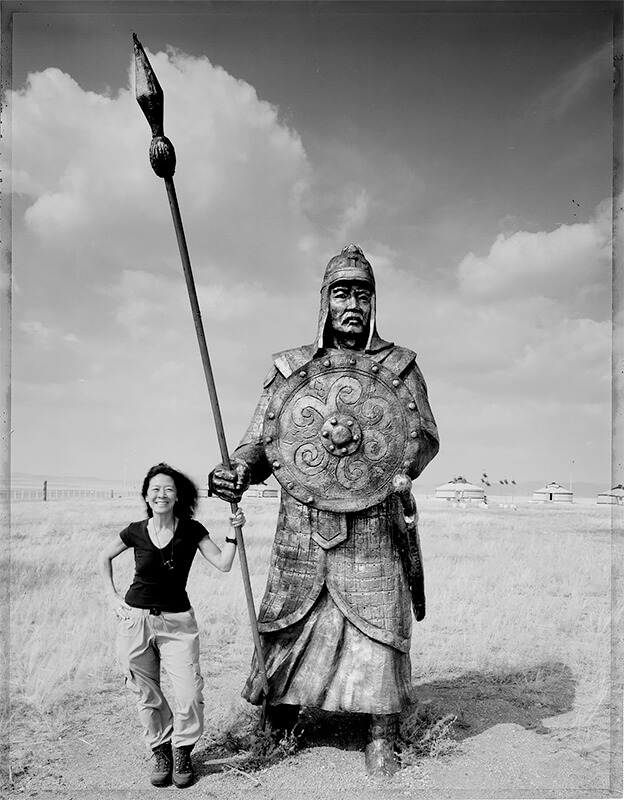Elaine Ling was an exuberant adventurer, traveler, and photographer who was most at home backpacking her view camera across the great deserts of the world and sleeping under the stars. Born in Hong Kong, Elaine Ling has lived in Canada since the age of nine. Upon arrival in Canada, Elaine was exhilarated by the freedom of space and began her attraction to Stone and places of Nature. She studied the piano, the cello and medicine. Since receiving her medical degree from the University of Toronto, she has practiced family medicine among various First Nations peoples in Canada's North and Pacific Northwest as well as on the other side of the world, in Abu Dhabi and Nepal.
Seeking the solitude of deserts and abandoned architectures of ancient cultures, Elaine Ling has explored the shifting equilibrium between nature and the man-made across four continents. Photographing in the deserts of Mongolia, Ethiopia, Madagascar, Timbuktu, Namibia, North Africa, India, South America, Australia, American Southwest; the citadels of Ethiopia, San Agustin, Persepolis, Petra, Cappadocia, Machu Picchu, Angkor Wat, Great Zimbabwe, Abu Simbel; and the Buddhist centres of Myanmar, Laos, Vietnam, Tibet, and Bhutan; she has captured that dialogue.
Ling's photographs, widely exhibited and published, are in the permanent collections of numerous museum and private collections including the Bibliothèque Nationale, Paris, France; Musée de la Photographie, Charleroi, Belgium; Fotografie Forum International, Frankfurt, Germany; Museet for Fotokunst, Odense, Denmark; Centro Portugues de Fotografia, Porto, Portugal; Scavi Scaligeri International Centre of Photography, Verona, Italy; Fototeca de Cuba, Havana; Lishui Museum of Photography; Museum of Fine Arts, Houston, Texas; Brooklyn Museum, New York; SE Museum of photography, Florida, the Cleveland
In Canada, Ling is in the collections of the National Gallery of Canada, Ryerson University, Art Gallery of Ontario, Royal Ontario Museum, the Canadian Museum of Contemporary Photography. Her international publications include work in View Camera, Photo Technique International, The Polaroid Book, Italian Zoom Magazine, Orion Magazine, Viktor Magazine, BMJ and Aperture.
When not photographing, Dr. Ling practiced family medicine in Toronto and played cello in Orchestra Toronto, a community orchestra. She was a fellow of the Royal Canadian Geographical Society.
Any books ordered will be filled by Edward Pong, her brother, thru his website
ultraanaloguerecordings.com